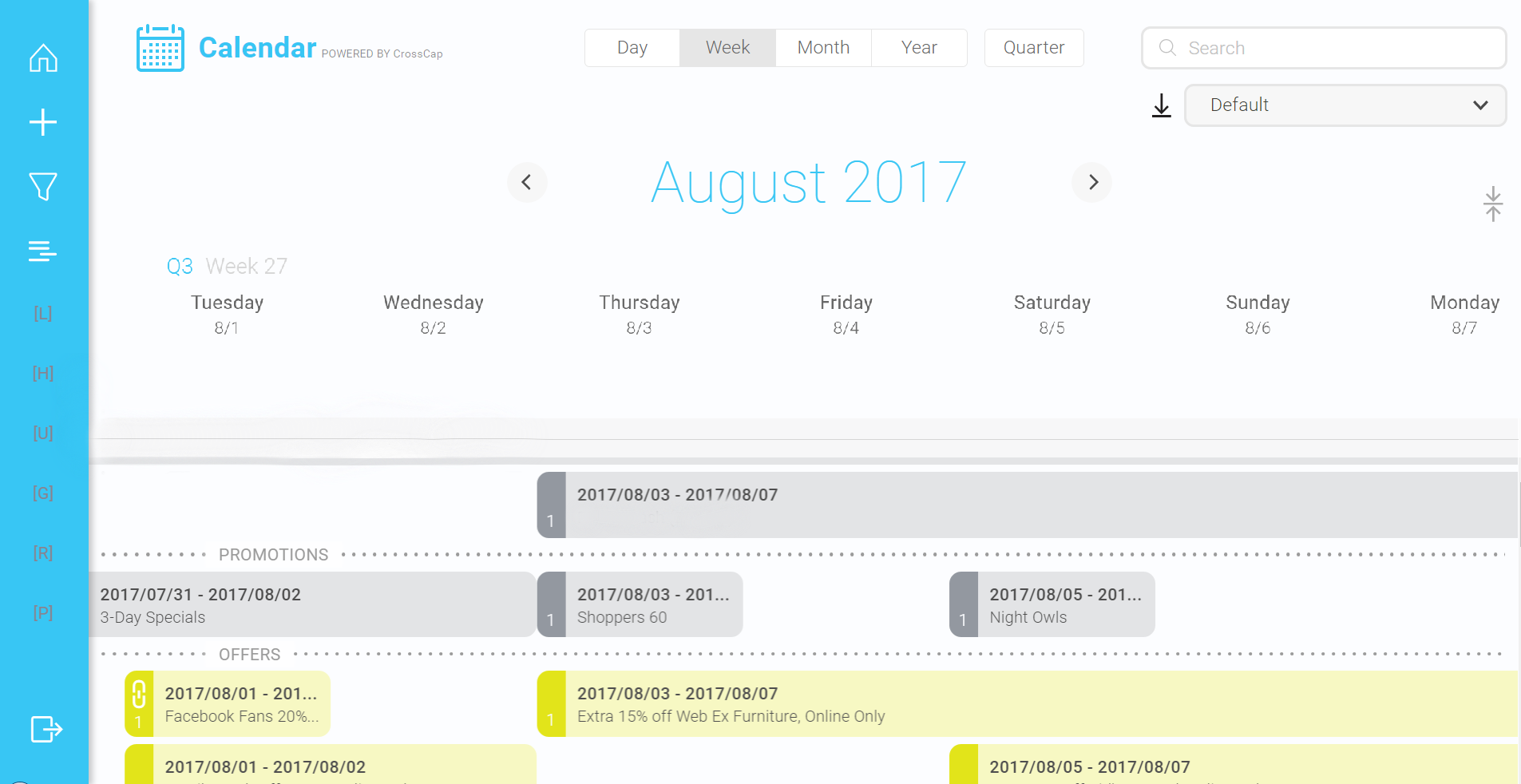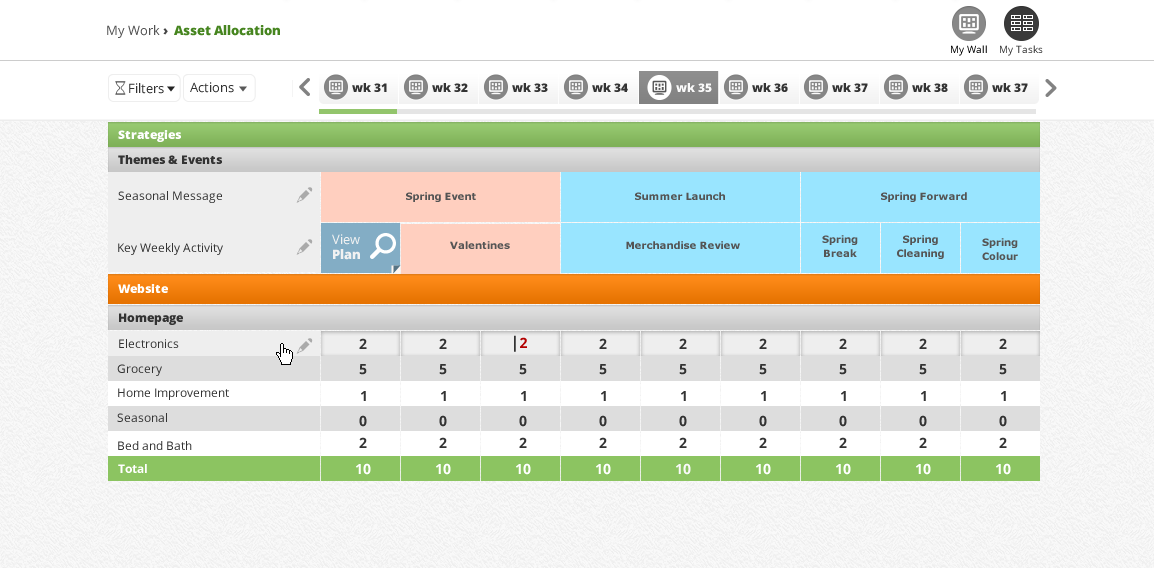(Last updated: December 2022)
In my previous post, I mentioned the complexity around developing an omni-channel retail marketing plan and outlined a methodology based on my experience at CrossCap. Today, I would like to focus on Strategic Planning which is the first step within the planning phase of implementing an omni-channel marketing plan. During the strategic planning phase, the marketing strategy team incorporates several different inputs to define the marketing strategy and develop an annual marketing plan that aligns the execution with the strategy.

Business Strategy:
Organizations typically define a 3-year and 1-year business strategy. Each 1-year strategic plan leads to the goals of the 3-year strategy. Our focus for this discussion is the 1-year strategic plan and specifically the marketing strategy aspect. The Chief Marketing Officer needs to consider several factors before defining a marketing strategy for a single year.

First of all the marketing strategy needs to support the year’s business goals which can range from a combination of developing the retail brand, emphasizing a merchandise business, national brands or promotional strategy. The execution of the marketing strategy is also constrained by budget and marketing channels that can access the target customer base. Aside from the business focus and merchandise strategy, marketing has several other inputs they need to incorporate while defining their marketing strategy. Some of the key inputs to defining the marketing strategy are:
Customer & Market Insights:
Retail marketing departments track and measure several metrics that help determine whether they’re aligned with their strategic goals. Some of these metrics are customer perception, overall impression, brand health, value etc. They help retailers define their goals, track and consistently measure themselves against their competition. Based on the historical performance of these measurements, marketing teams tweak their strategy to try and achieve their goals.
Last Year’s (LY) Performance:
Previous year performance which would include metrics such as traffic, sales, margin, forecast sales, incremental sales and incremental margin are key in determining what worked and what didn’t work during the different campaigns and seasons. At the strategic level, the LY performance data would be reviewed more in the manner of how productive all the space was, and the dollars assigned to each business during a season, or through a campaign. This information helps determine what needs to be altered to achieve the year’s goals.
Last Year’s Competitor Strategy:
A major component of defining strategy includes understanding your competitor’s strategy. During the strategic planning phase, retailers review key themes, messages and what merchandise the competitor focused on in a season. For example assuming the BTS (Back To School) season spanned six weeks, retailers would:
- Analyze the competitor’s themes for each week
- Review what were the main messages
- Understand what merchandise business was the main focus (Shoes, Jeans, Basics, etc.)
They would also try and understand the amount of investment competitors dedicated towards their merchandising categories by reviewing number of print pages, GRPs, online banners, Facebook promotions and Home Page allocation for web & mobile.
Market Mix Modeling:
Retailers develop models to understand the relationship between investing marketing assets into a business during a certain time and the anticipated return. These are macro models that provide a guideline to the CMO, however they do not address certain aspects or changes in the market like emerging marketing channels, trends or socio-economic transformations. Marketing teams run multiple scenarios by dividing the investment over time and across several categories to demonstrate how the budget can be optimally spread over time and shared across the categories.
Once all the inputs have been assessed and incorporated, the marketing strategy team would outline the goals and define a marketing plan to support the goals. These goals are targets the marketing team will be measuring against throughout the year (weekly, monthly & seasonally or quarterly) to ensure their plan is driving the business towards the business goals. Typically retailers plan on a 52, 53 week time frame; however with the growth of digital marketing, this is sometimes done at day level. The marketing plan is an output of the strategic planning phase and is composed of three major components.
Marketing Calendar:
The marketing calendar defines all the strategic initiatives and tactics that support the plan. A strategic initiative can span a full year, season, month or day. Strategic initiatives include campaigns that are defined to support a strategic goal. Tactics are specific advertising instances that are defined by the type of channel (In-store, Print, Broadcast or Digital), and a duration. A marketing calendar defines the span for each and every tactic for example a BTS Circular will span one week, while the TV spot may air over 3 weeks. The calendar portrays the strategic initiative’s theme and outlines the tactic theme and weight which is defined in terms of media investment (for example 250 GRPs, 24 page Circular, 3 million contact Email send list etc.) This way the marketing calendar communicates, shares and aligns marketing, merchandising and operations about the marketing deployed to support the business goals. Marketing calendars also incorporate KPIs such as LY Sales and Forecasts to demonstrate alignment between projected revenue and marketing investment.

Asset Allocation Plan:
The asset allocation plan defines at a high-level how much of each marketing asset will be allocated to a particular business. This is usually done at a weekly level to demonstrate how much investment is made across different businesses for each week in every marketing channel. For example an asset allocation plan will identify how many pages are assigned to a specific merchandise business during a week’s circular, how much of the website Home Page is dedicated to that business, how many GRPs that business will be allocated for their TV spots and also how much of the store feature space (end caps, or entrance area) will be dedicated to the business. This information can then be rolled up by business for the month, season, quarter and year. The asset allocation plan is a manifestation of the retailer’s commitment to the merchandise business and their merchandise strategy. Just as a retailer would plan their asset allocation, they can also analyze a competitor’s asset allocation by reviewing how much ad space was allocated to their competitor’s businesses.

Marketing Budget:
As a component of the marketing plan, the marketing budget defines the weekly, seasonal and annual investment in marketing for the retailer. To develop the marketing budget, marketing departments utilize the marketing calendar and asset allocation plan to determine the weights (number of pages, GRPs, etc.) and use historical data from agencies or that they have previously compiled to forecast their marketing budget. For example, if a 30 sec TV spot on National TV running during prime-time on week 23 with 250 GRPs costs $1M, this would be taken as the estimated cost for a planned TV spot. A similar approach for estimating other marketing channels and for each and every vehicle planned is performed until the overall budget is compiled. This information is then rolled-up to outline the weekly, seasonal, quarter and annual budgets.

Annual Marketing Planning Meeting:
During the annual marketing planning meeting, the marketing strategy team would present the calendar outlining the strategy, seasonal initiatives along with all the defined tactics with their associated weights. They would then present the asset allocation plan highlighting the space allocated to each and every business for the different seasons and the approximate investment and percent of the marketing budget dedicated to the businesses.The marketing plan at the annual level goes through multiple changes but is finalized and committed to prior to the beginning of the next fiscal year. Once the marketing strategy plan is committed, the next step is to develop a category plan which is typically performed at a seasonal level. In my next post, I will share the best practice methodology of developing an omni-channel category plan.

